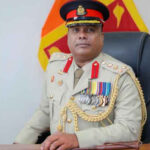
Economic Development Minister’s Inflation Logic Baffles: 5% Target Sparks Debate
- CNL Reporter
- July 28, 2025
- News, Political
- Economic Development Minister, inflation
- 0 Comments
News of the Day
In a stunning parliamentary address that left both economists and legislators bewildered, Deputy Minister of Economic Development Anil Jayantha Fernando defended Sri Lanka’s controversial 5% inflation target — a figure he openly admitted was based on the central bank’s own historical inflation creation. His remarks have ignited renewed scrutiny over the credibility of Sri Lanka’s monetary policy and its long-troubled economic management.
Speaking in response to a question from opposition MP Ravi Karunanayake, Minister Fernando acknowledged that the 5% inflation benchmark was not a forward-looking policy goal but merely reflective of the central bank’s past performance. “If it is not appropriate in the future, we can change it accordingly,” he said, referencing the current inflation agreement with the government, which expires in 2026.
Observers called the remarks “mind-boggling” as they essentially confirm what critics have long argued — that Sri Lanka’s inflation target is a self-justifying loop, designed more to defend past policy failures than to protect public welfare.
A History of Inflation and Rupee Collapse
Critics point out that since the end of Sri Lanka’s civil war in 2009, successive central bank policies — allegedly under the guise of maintaining “stable” inflation — triggered multiple currency collapses: in 2012, 2015/16, 2018, and the 2020-21 period. The rupee depreciated from Rs. 113 to as low as Rs. 360 to the US dollar during these crises.
These currency devaluations, critics say, destroyed real wages, raised food and utility prices, and caused widespread public discontent — ultimately contributing to political upheaval and the downfall of elected governments.
Despite this, Minister Fernando emphasized that the 2025 budget was funded entirely through “non-inflationary means,” insisting that no money had been printed. He stated that the government aimed to raise Rs. 2,125 billion domestically and secure $75 million in foreign financing. “We have not moved to fill this gap with inflationary ways or money printing,” Fernando assured Parliament.
Circular Reasoning and Broken Anchors
Analysts have slammed the central bank’s inflation target as a circular argument — a number derived from previous inflation levels caused by the same institution. Critics argue this renders the concept of an “independent” central bank meaningless if its mandate includes depreciating the currency annually under the guise of competitiveness or inflation management.
Sri Lanka’s high inflation dates back to the early 1980s, when the country’s monetary authorities failed to anchor the currency. Even now, the existence of exchange controls signals a fundamental flaw in the operating framework, contradicting classical economic principles laid down by Adam Smith, David Ricardo, and David Hume.
The Global Backdrop: Lessons Ignored?
Minister Fernando’s defense also reignited debate about Sri Lanka’s monetary policy in the global context. The idea of peacetime inflation, popularized by U.S. macroeconomists in the 1960s, claimed a tradeoff between inflation and employment — a theory that led to decades of policy errors globally, including the collapse of the Bretton Woods system and the 1970s Great Inflation.
However, countries like Germany and New Zealand eventually course-corrected. The Bundesbank adopted monetary targeting and currency appreciation to tame inflation, while New Zealand pioneered inflation targeting in 1990 with a 0–2% target — treating 2% not as a goal but as a ceiling. In contrast, Sri Lanka appears to use 5% as a floor.
Countries like Japan, Taiwan, and Singapore avoided similar inflation disasters by appreciating their currencies and maintaining external anchors during the 1970s and 1980s — a strategy Sri Lanka has largely rejected.
A Rare Period of Discipline – But For How Long?
From September 2022 to late 2024, Sri Lanka reportedly pursued a deflationary monetary policy, allowing the rupee to appreciate to about 300 per dollar. But experts now warn that recent rate cuts and the absence of tools like quantitative policy contraction (QPC) in the current IMF programme threaten to undo that discipline.
They caution that any attempt to rebuild reserves without tight monetary policy will inevitably lead to another currency depreciation and fresh social unrest. As analysts put it: you cannot target inflation and collect reserves simultaneously without trade-offs.
A Return to 1950s Missteps?
Historically, Sri Lanka operated a currency board until 1950. But within 18 months of creating a central bank, it shifted to inflationary policies under Governor John Exter, sterilizing capital inflows and eventually creating its first full-blown currency crisis in 1953.
Instead of appreciating the currency or absorbing excess liquidity, the central bank supported government borrowing, leading to the same inflationary path now widely criticized.
The Global Parallel: Will Sri Lanka Learn?
The Federal Reserve and European Central Bank reached inflation peaks in 2022 not seen since the 1970s, prompting nationalist backlash across many countries. Analysts warn that Sri Lanka’s reversion to loose monetary practices may similarly end in chaos unless policymakers learn from global history.
The current debate over the 5% inflation target — and Minister Fernando’s surprising candor about its arbitrary origins — has brought to the surface deep questions about the true purpose of Sri Lanka’s monetary policy: is it to ensure price stability and protect the public, or merely to paper over past mistakes? Either way, the numbers may add up, but the logic certainly doesn’t.

